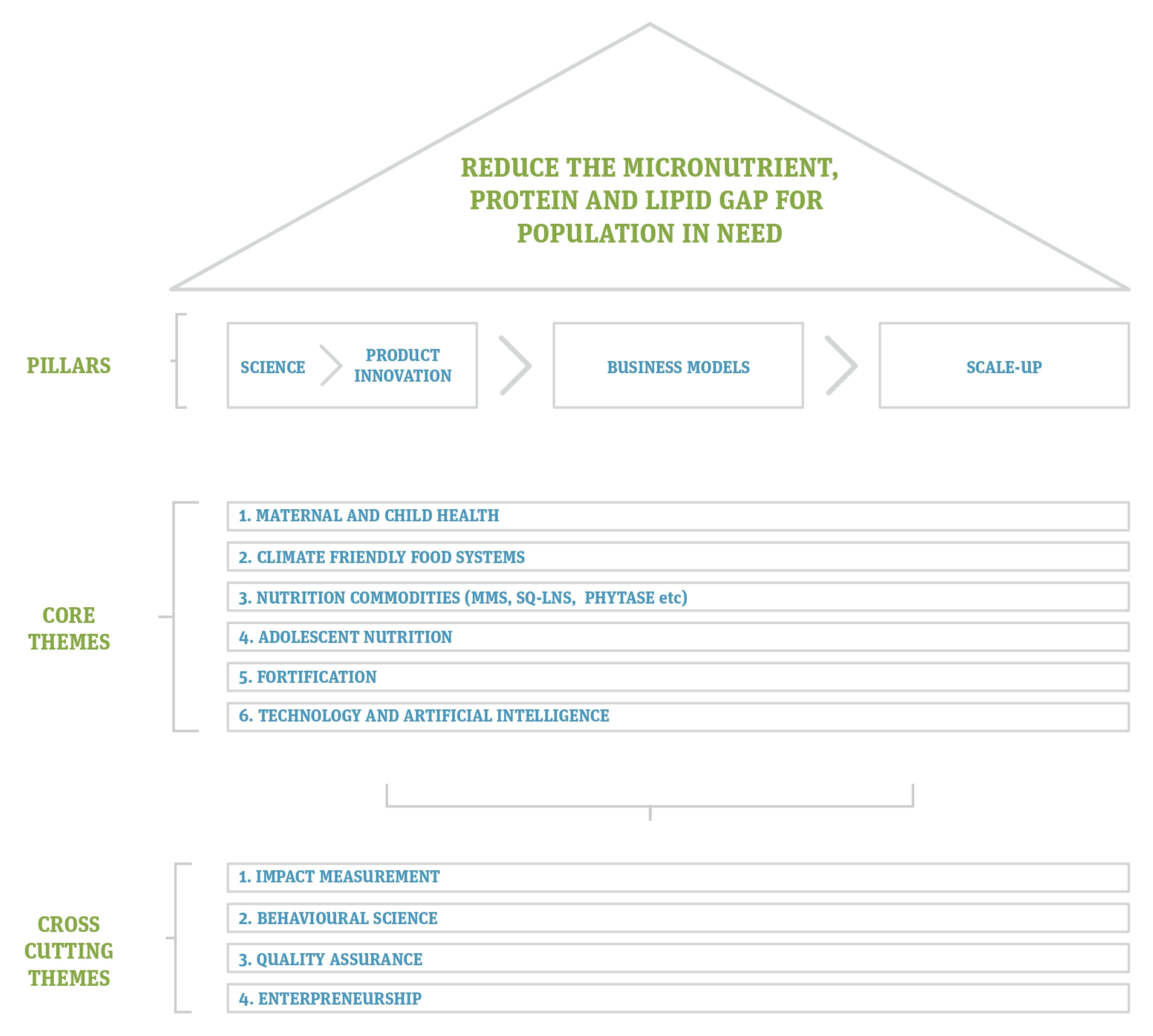Stage 1:
We will continue the work on science-based solutions for health and nutrition issues and expand on product innovation.
Our strategy remains relevant, even more so today. The future-ready strategy we adopted in 2022 was in response to the changing world. Today, that strategy is more vital than ever. Remaining small and agile has kept us stable in an increasingly unstable donor landscape and has even increased our impact by becoming more local and business oriented.
We have a 3-stage approach to problem solving
Generating scientific knowledge and converting that into solutions for “what” needs to be done; providing evidence-based solutions and next-gen interventions
The knowledge of “how” to deliver the solutions in a sustainable, locally led, efficient way; following the ‘helping people help themselves’ model
Combine the “what” and “how” and scale to achieve high levels of coverage; impact lives and livelihoods, and solve public health problems
Our goal is to reduce the micronutrient, protein and lipid gap for populations in need, specifically women, adolescents and children
Stage 1:
We will continue the work on science-based solutions for health and nutrition issues and expand on product innovation.
Stage 2:
We will continue to test local sustainable social business models to achieve impact, directly, with partners and entrepreneurs on the ground.
Stage 3:
We will continue to transfer skills and knowledge by partnering with national and international stakeholders as well as governments to scale-up solutions.

Our focus remains on science and innovation, piloting social business models and taking them to scale with the help of strategic partnerships. Our focused core areas of work remain the same, while the cross-cutting themes are key to achieving impact in projects across the three stages. While we stay open to new areas of work, such a step will be taken only based on a strong justification of impacting the communities we want to serve.
Over the last four years, we have strengthened our boots on the ground in LMICs, especially in Africa. Our office in Rwanda is on track to becoming our regional office and we have ground staff in more than 10 countries. Having our staff on the ground helps us contextualize our innovations and solutions. Sometimes in countries we need to work with multiple small partners to effectively tap local networks for the most efficient delivery of our tailored interventions.
Find out how our work has evolved over the decades
Meet the people behind our mission to bring better nutrition to all
Know more about our allies in the battle against malnutrition
Examine how we build DEI values into the fabric of Sight and Life